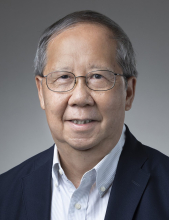CEE Seminar: Digital Rock Physics: Applications in Fluid Flow and Rock Deformation

Research Professor
Department of Geosciences
Stony Brook University
Abstract: In the physics of rock, there are two fundamental questions intrinsic to geomechanical applications such as the extraction of hydrocarbon resources, development of geothermal energy, carbon sequestration, waste disposal and induced seismicity: What controls the flow of fluids in the porous rock formation? How does deformation evolve and localize to form structures that may enhance or inhibit the fluid flow? Extensive field observation and systematic laboratory investigation have documented the complexity of flow in porous media, and its interplay with strain localization. Percolation theory and bifurcation analysis have provided useful frameworks for the analysis of these phenomena. With advances in 3D imaging of the pore space complexity, digital rock physics can now be pursued to model these processes via voxel-based simulations. In the first part of the talk, we will review recent advances in computational research on fluid flow in sandstone.
To image in real time, the deformation of a porous rock under confinement in a pressure vessel poses significant technical challenge, which necessitates the development of a triaxial rig that is “transparent” to the synchrotron light source. We have conducted experiments on a porous limestone at such a mechanical test rig at the European Synchrotron Radiation Facility (ESRF, beamline ID19), with capability of rock deformation at confinement up to 100 MPa and controlled pore pressure and temperature. Time-lapse 3D images of pore structure can be acquired simultaneously by X-ray microtomography. Analysis of the digital rock physics data has elucidated the micromechanical processes during the pre- and post-peak stages, and digital volume correlation (DVC) of the CT images provided important insights into the mechanics of failure and strain localization. Finite element modeling of the pore-scale deformation has highlighted the control of pore space heterogeneity over the development of compaction localization.
Bio: Teng-fong Wong is a research professor at the Department of Geosciences at Stony Brook University. He is also affiliated with UC Irvine as a research associate in the CEE department, and with the Chinese University of Hong Kong as an emeritus professor. He is a coauthor, with Mervyn Paterson, of the monograph “Experimental Rock Deformation, The Brittle Field,” and with Yong Chen and Enru Liu, of the textbook “Rock Physics” in Chinese. A fellow (2017) of the American Geophysical Union, he is a recipient of the Basic Research Award (1986) of the U.S. National Committee for Rock Mechanics, and the Louis Néel Medal (2010) of the European Geosciences Union for his contributions in rock physics and earthquake mechanics. He was the Maurice A. Biot lecturer (ASCE 2017) at the Department of Civil Engineering & Engineering Mechanics, Columbia University.
Share
Upcoming Events
-
CBE 298: Development and Understanding of New Concept Catalytic Materials for Environmental Applications
-
CEE Ph.D. Defense Announcement: Tracking COVID-19 in Low Population Communities through Wastewater Surveillance
-
CEE Seminar: Uncertainty in the Vulnerability of Metro Transit Networks - A Global Perspective on Infrastructure Resilience
-
UCI CEE FALL MIXER - 2025
-
CEE Ph.D. Defense Announcement: Breaking New Ground - Excavation Performance in Tar-Infused and Conventional Soils for LA Metro D-Line Extension Project
